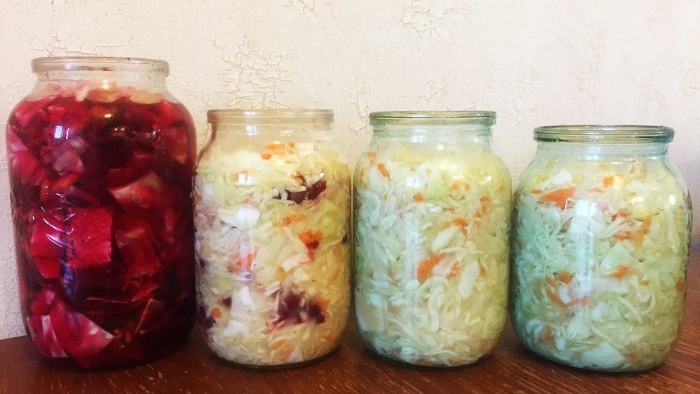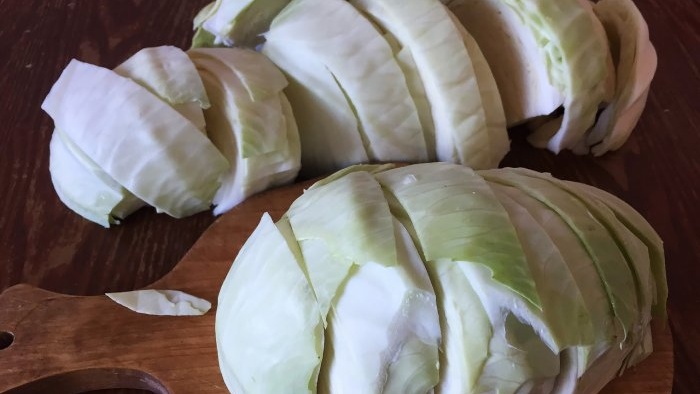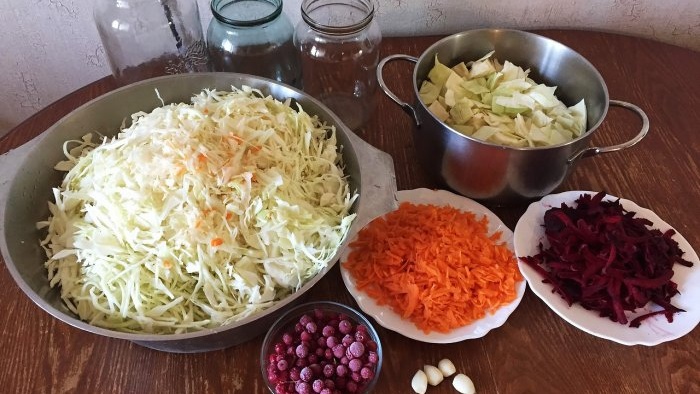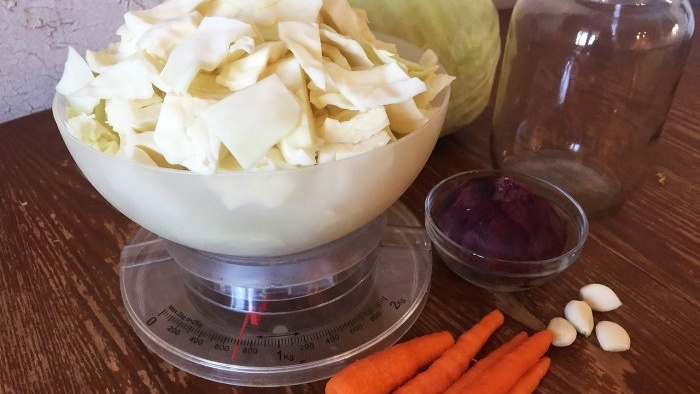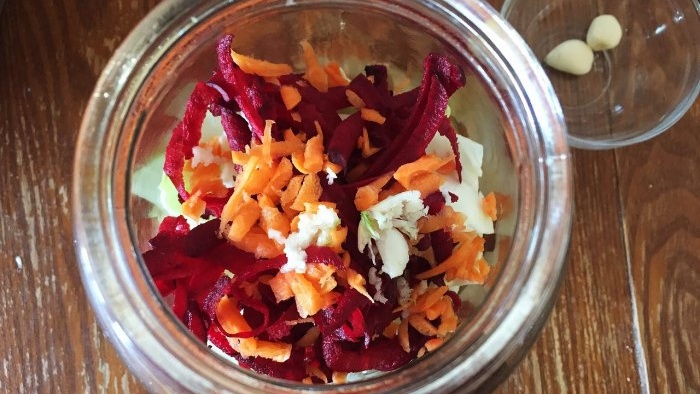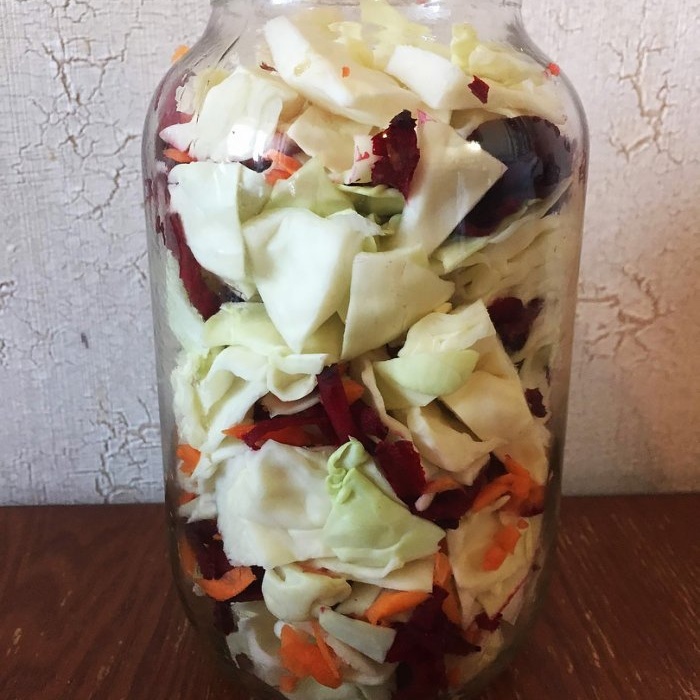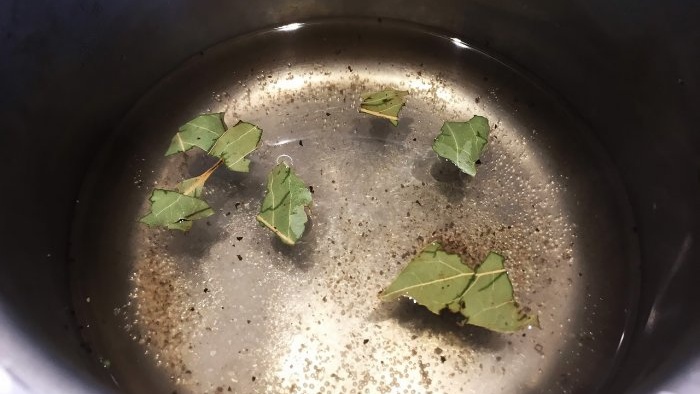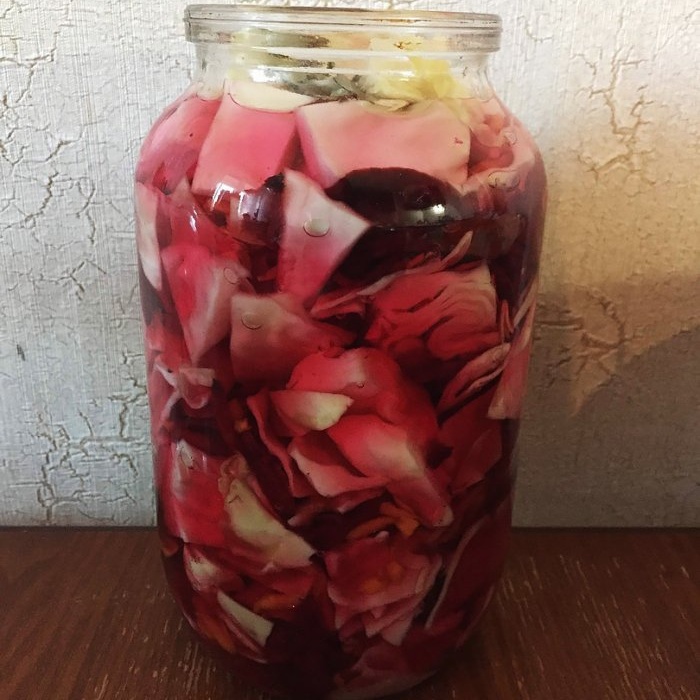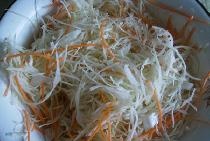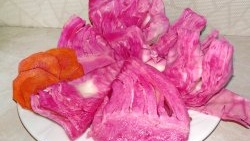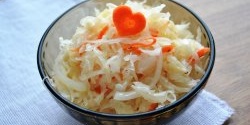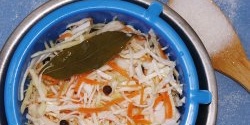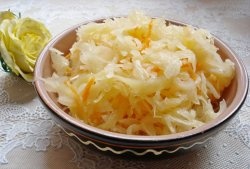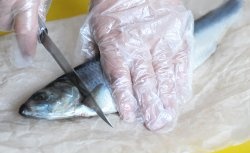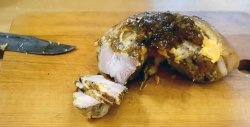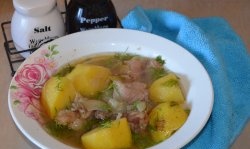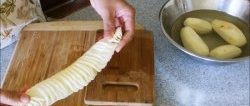3 types of cabbage in one go: pickled with beets, classic pickled and pickled with berries
Sauerkraut is an excellent addition to potato dishes in the daily menu of most Russian families, as well as a source of fiber, minerals, vitamins, including vitamin C, which is mega-important for the human body. Sauerkraut is consumed as an independent dish and is used when cooking borscht and cabbage soup. At the same time, the process of fermenting cabbage is simple and not labor-intensive, which allows you to always have a ready-to-eat product in the refrigerator for a small amount of money.
You can add variety to the menu if you compact shredded cabbage into several jars, adding various ingredients to the container: beets, cranberries, red currants, cumin or coriander. Example – cooking three types of cabbage at one time:
- sauerkraut according to the classic recipe;
- sauerkraut with red currants;
- pickled cabbage with beets and carrots.
In my personal opinion, despite the impressiveness of the process of preparing a dish with currants, it is still better to add the berry to classic sauerkraut immediately before serving.In this case, the berry remains intact and contrasts perfectly with the white color of the main vegetable.
Required:
- Cabbage – 3.5 kg.
- Carrots – 400 g.
- Salt (not iodized!) – 1 tbsp. l. for 1 kg of cabbage.
- Beetroot – 1 root vegetable.
- Garlic for pickling – 4 cloves.
- Red currants - cups of berries.
Preparing pickled cabbage with beets, classic sauerkraut and berries
1. Shred 3 kg of cabbage for pickling and cut 600 g of cabbage into square slices for pickling. Grate the beets and carrots on a coarse grater.
2. Marinate cabbage with beets.
In a 1.5-liter jar, place layers of pieces of kaput, carrot and beetroot strips, as well as chopped or pressed garlic.
Prepare the marinade from 1 liter of water, two tablespoons of salt, three tablespoons of sugar, 100 ml of table vinegar (9%), bay leaf and several black peppercorns (allspice and cloves are added if desired) - boil everything for 3 minutes.
Pour the cooled marinade into the jar with the prepared vegetables. Marinate for 3 days.
3. Sauerkraut. To do this, rub the cabbage with carrots and salt with your hands until the juice is released. We compact the ground mixture into jars, leaving 2-2.5 cm at the top free for the juice to escape during the process of sauerkraut. If we cook with berries, then sprinkle the layers of cabbage with currants or cranberries.
Leave the jars filled with vegetables to ferment or marinate at kitchen temperature for about three days. The cooking time of the dish depends on both the type of cabbage and the ambient temperature. Starting from the second day, when air bubbles are visible in the jar of cabbage, we pierce the contents a couple of times a day with a wooden sushi stick to release carbon dioxide from the jar.If the gas is not released, it will greatly worsen the smell of the finished product and may cause mold to appear. At the end of the pickling process, remove the cabbage to the cold.
As you can see from the photo, the pickled cabbage was subjected to frequent “tasting” by members of the household, so its volume was greatly reduced by the end of the pickling. Tasty!

